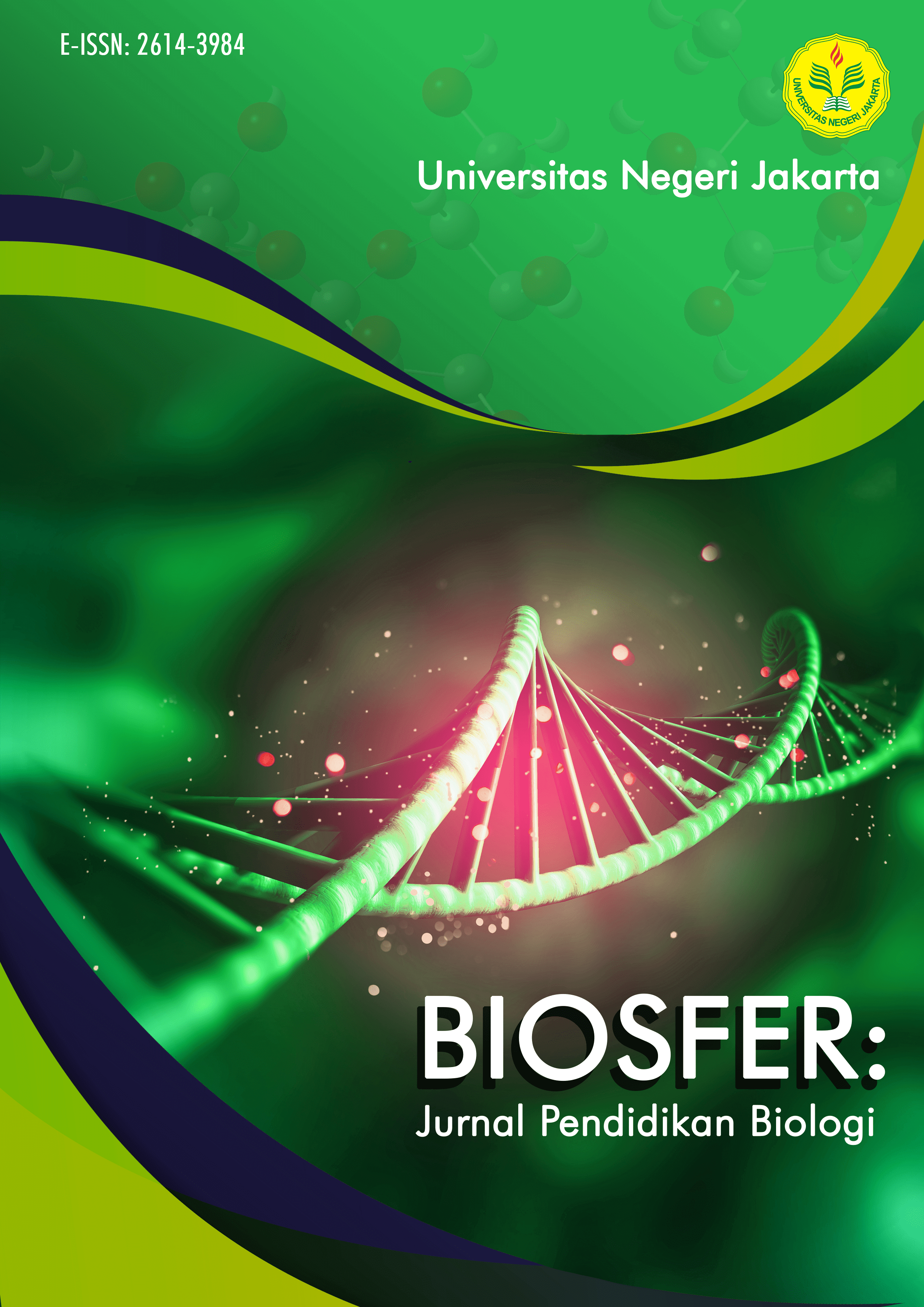Asynchronous project-based learning: Is it effective in biology learning process?
DOI:
https://doi.org/10.21009/biosferjpb.29742Keywords:
Concept understanding, Online Learning, Project-Based LearningAbstract
This study aims to determine the effectiveness of the Project-Based Learning model conducted via online (e-PjBL) on the concept understanding of evaluation in the biology learning. A quasi-experimental method with a non-equivalent pre-test and post-test group design is chosen in this study. The research is carried out at the Biology Education Study Program of Universitas Tidar in March - June 2021. A total of 63 college students become the sample in this research which are divided into experimental class and control class. The instrument used to collect the data is in the form of a concept understanding test about the evaluation of biology learning. Then, the results of the data are analyzed by quantitative. The results show that there is no difference in the use of online Project-Based Learning models on the concept understanding of evaluation in biology learning. This is indicated by the results of hypothesis test which is 0.184 > 0.05. Meanwhile, the average N-Gain in the experimental class is 0.2083 which belongs to the ineffective category. Next, several factors become obstacles to the online Project-Based Learning that causes this learning model to be ineffective.
References
Adhani, A. (2017). Kosakata Bahasa Indonesia. Yogyakarta: Textium.
Chaer, A. (2003). Psikolinguistik Kajian Teoretik. Jakarta: PT Rineka Cipta.
Chaer, A. (2011). Tata Bahasa Praktis Bahasa Indonesia. Jakarta: PT Rineka Cipta.
Dahidi, S. & A. (2014). Pengantar Linguistik Bahasa Jepang. Jakarta Pusat: Kesaint Blanc.
Dardjowidjojo, S. (2014). Psikolinguistik Pengantar Pemahaman Bahasa Manusia. Jakarta: Yayasan Obor Indonesia.
Hidayah, Y. F. N. (2017). Pemerolehan Kosakata Anak Usia 3-6 Tahun Di Pg-Tk Aisyiah Bhustanul Atfhal 25 Wage-Sidoarjo. Jurnal, 1(2), 143–153.
Keraf, G. (1985). Tata Bahasa Indonesia. Flores: Nusa Indah.
Kushartanti, Untung Yuwono, dan M. R. L. (2009). Pesona Bahasa: Langkah Awal Memahami Linguistik. Jakarta: Gramedia.
Maksan, M. (1993). Psikolinguistik. Padang: IKIP Padang Press.
Rahmawati, Diah, D. (2012). Penguasaan Kosakata Bahasa Indonesia pada Anak Usia Prasekolah. Digital repository Universitas Negeri Malang.
Saddhono, K. (2015). Teori dan Aplikasi: Pembelajaran Keterampilan Berbahasa Indonesia. Solo: CakraBooks.
Soedjito. (1992). Kosakata Bahasa Indonesia. Jakarta: Gramedia.
Sudaryanto. (2005). Metode dan Aneka Teknik Analisis Bahasa. Yogyakarta: Duta Wacana University Press.
Tarigan dkk. (1998). Pendidikan Bahasa dan Sastra Indonesia di Kelas Rendah. Jakarta: Depdikbud.
Yani, T. A., & Irma, C. N. (2021). Keterlibatan Orang Tua Dalam Pembelajaran Bahasa Indonesia Di Masa Pandemi Pada Siswa Sd Negeri 02 Pengarasan Kecamatan Bantarkawung. Jurnal Pendidikan Bahasa Dan Sastra Indonesia Metalingua, 6(1), 11–18. https://doi.org/10.21107/metalingua.v6i1.9084
Downloads
Published
How to Cite
Issue
Section
License
The Authors submitting a manuscript do so on the understanding that if accepted for publication, copyright of the article shall be assigned to Biosfer: Jurnal Pendidikan Biologi (Biosferjpb) and Departement of Biology Education, Universitas Negeri Jakarta as publisher of the journal.



